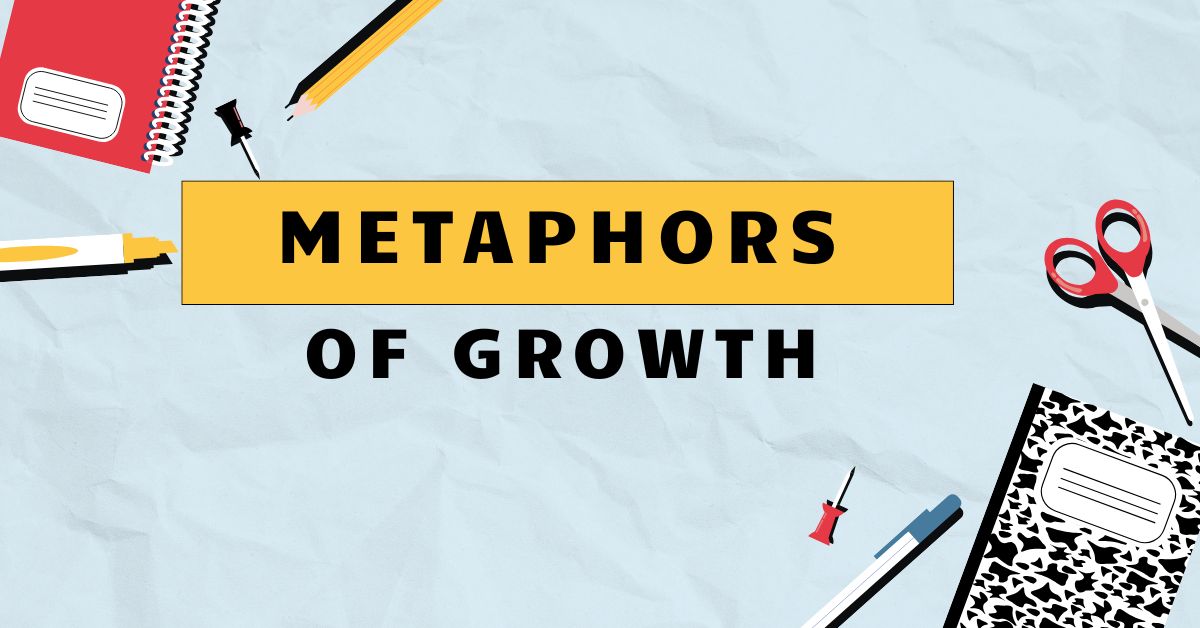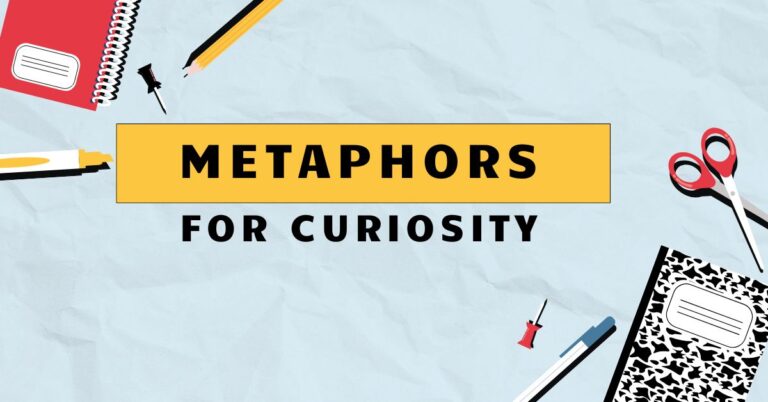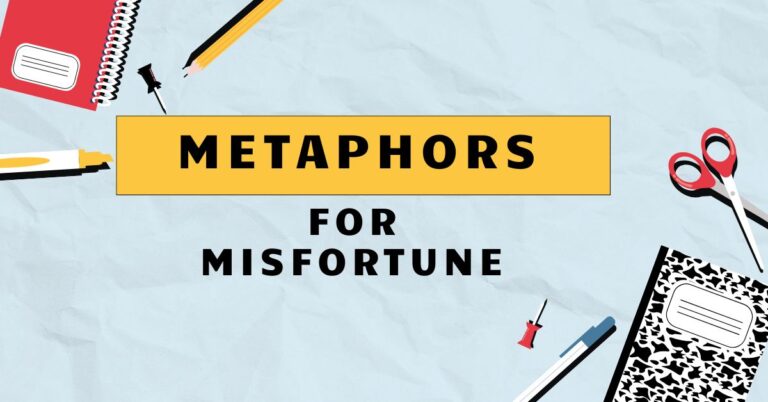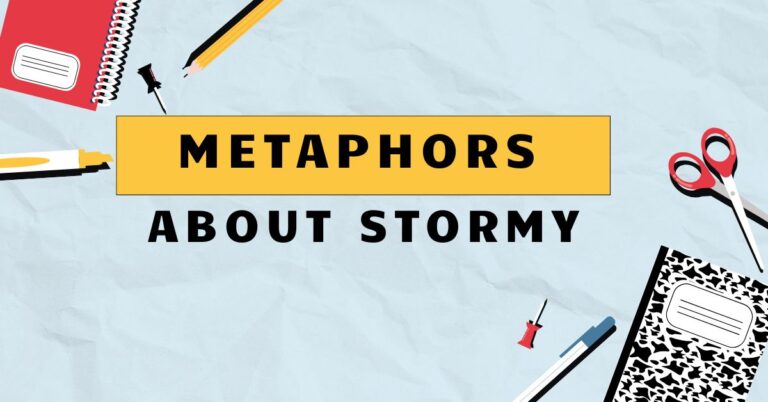47 Metaphors of Growth: Understanding Coming-of-Age Language
Metaphors are essential figures of speech that enrich our language, especially when discussing abstract concepts like growing up. Understanding how metaphors are used to describe personal development, maturity, and the transition from childhood to adulthood provides valuable insights into both language and the human experience.
This article will explore the various types of metaphors used to depict growth, their structural elements, and how to effectively use and interpret them. This guide is perfect for English language learners, students studying literature, or anyone interested in the nuances of metaphorical language.
By mastering the use and interpretation of metaphors related to growing up, learners can enhance their comprehension of literature, improve their writing skills, and gain a deeper appreciation for the complexities of human development. This article serves as a comprehensive resource, providing clear explanations, numerous examples, and practical exercises to solidify understanding and promote effective application of these powerful linguistic tools.
Table of Contents
- Introduction
- Definition of Metaphors About Growing Up
- Structural Breakdown of Growth Metaphors
- Types and Categories of Growth Metaphors
- Examples of Metaphors About Growing Up
- Usage Rules for Growth Metaphors
- Common Mistakes with Growth Metaphors
- Practice Exercises
- Advanced Topics in Growth Metaphors
- Frequently Asked Questions
- Conclusion
Definition of Metaphors About Growing Up
A metaphor is a figure of speech in which a word or phrase is applied to an object or action to which it is not literally applicable. When used in the context of growing up, metaphors serve to describe the abstract process of maturing, developing, and transitioning from childhood to adulthood by comparing it to something more concrete and relatable.
These metaphors add depth and emotional resonance to discussions about personal growth.
Classification:Metaphors about growing up fall under the broader category of conceptual metaphors. Conceptual metaphors are those in which one abstract idea (e.g., growing up) is understood in terms of another, more concrete idea (e.g., a journey).
This allows for a richer and more nuanced understanding of the complexities of personal development.
Function: The primary function of these metaphors is to make the intangible process of growing up more understandable and relatable. By drawing parallels between personal development and familiar concepts like journeys, plants, or buildings, metaphors help us grasp the various stages, challenges, and transformations involved in becoming an adult.
Contexts:These metaphors are prevalent in literature, poetry, film, and everyday conversation. They are often used to convey the emotional and psychological aspects of growing up, offering a powerful and evocative way to describe the journey of self-discovery and maturation.
In literature, these metaphors can provide deeper insight into a character’s development and the themes of the story. In everyday conversation, they can help us express our own experiences and relate to others on a more personal level.
Structural Breakdown of Growth Metaphors
Understanding the structure of metaphors about growing up involves identifying thetenor, thevehicle, and theground. The tenor is the subject being described (e.g., the process of growing up).
The vehicle is the concept used to describe the tenor (e.g., a journey). The ground is the shared characteristics between the tenor and the vehicle (e.g., challenges, progress, and milestones).
For instance, in the metaphor “Life is a winding road,” the tenor is “life,” the vehicle is “a winding road,” and the ground includes the unpredictable nature of life, the presence of obstacles, and the idea that there are different paths to take. By analyzing these three components, we can gain a deeper appreciation for the meaning and impact of the metaphor.
Furthermore, the effectiveness of a growth metaphor often depends on itsresonanceandappropriateness. A resonant metaphor is one that evokes strong emotions and connects with the reader or listener on a personal level.
An appropriate metaphor is one that accurately reflects the nuances of the growing-up experience and avoids oversimplification or misrepresentation.
Types and Categories of Growth Metaphors
Metaphors about growing up can be categorized based on the type of concept used to represent the growth process. Here are some common categories:
Journey Metaphors
Journey metaphors are among the most common ways to describe growing up. They depict life as a path, road, or voyage, with various stages and challenges along the way.
These metaphors emphasize the idea that growing up is a process of moving forward, encountering obstacles, and reaching milestones.
Plant Metaphors
Plant metaphors compare the growth process to the development of a plant, from a seed to a mature tree. These metaphors highlight the importance of nurturing, patience, and resilience in the face of adversity.
They often focus on the idea that individuals need the right environment and support to flourish.
Building Metaphors
Building metaphors portray growing up as the construction of a structure, such as a house or a skyscraper. These metaphors emphasize the importance of a strong foundation, careful planning, and the gradual addition of new skills and experiences.
They often highlight the idea that personal development is a process of building upon existing strengths and overcoming weaknesses.
Weather Metaphors
Weather metaphors use changes in weather to symbolize the different phases and emotions experienced during growth. Sunny days might represent periods of joy and success, while storms could symbolize challenges and setbacks.
These metaphors capture the unpredictable and ever-changing nature of growing up.
Transformation Metaphors
Transformation metaphors describe growing up as a process of changing from one form to another, such as a caterpillar transforming into a butterfly. These metaphors emphasize the idea that personal development involves significant changes in identity, perspective, and capabilities.
They often highlight the potential for growth and self-discovery.
Examples of Metaphors About Growing Up
Here are some examples of metaphors about growing up, organized by category:
Journey Metaphor Examples
Journey metaphors often use the imagery of paths, roads, and voyages to represent the process of growing up. They highlight the challenges, milestones, and transformations that occur along the way.
The following table illustrates various journey metaphors used to describe growing up, along with their interpretations:
| Metaphor | Interpretation |
|---|---|
| Life is a winding road. | Life has unexpected turns and challenges. |
| The path to adulthood is not always smooth. | Growing up involves overcoming obstacles and difficulties. |
| She’s navigating the waters of adolescence. | She’s dealing with the complex emotions and challenges of being a teenager. |
| He’s on a journey of self-discovery. | He’s exploring his identity and values. |
| Growing up is a marathon, not a sprint. | Personal development takes time and perseverance. |
| She’s reached a crossroads in her life. | She’s facing a major decision that will impact her future. |
| He’s charting a new course for himself. | He’s taking control of his life and making his own choices. |
| Life is a rollercoaster. | Life has many ups and downs. |
| Growing up is like climbing a mountain. | Growing up is challenging but rewarding. |
| She is sailing into adulthood. | She is confidently approaching her adult life. |
| His childhood was a long and arduous trek. | His childhood was full of hardships and challenges. |
| The road of life is paved with lessons. | Life experiences teach valuable lessons. |
| He’s lost his way on the path to maturity. | He’s struggling to find direction in his life. |
| She’s forging her own path in life. | She’s creating her own unique identity and direction. |
| Growing up is like crossing a bridge. | Growing up is a transition from one stage to another. |
| He’s at the starting line of his adult life. | He’s about to begin his independent life. |
| She’s navigating through the maze of adulthood. | She’s dealing with the complexities and challenges of adult life. |
| Life is a voyage across a vast ocean. | Life is full of uncertainty and adventure. |
| He’s reached the summit of his youth. | He’s reached the peak of his youthful experiences. |
| Her journey to adulthood is just beginning. | She is at the early stages of her adult life. |
| Life is a highway. | Life is a journey with many destinations and experiences. |
| The road ahead is full of possibilities. | The future holds many opportunities and potential paths. |
| He’s taking the scenic route through life. | He’s enjoying the journey and appreciating the small moments. |
| She’s reached a fork in the road. | She’s facing a decision with multiple possible outcomes. |
| Growing up is like a pilgrimage. | Growing up is a meaningful journey of self-discovery and transformation. |
| He’s traveling through the seasons of his life. | He’s experiencing the different stages and phases of life. |
| Life is a quest. | Life is a search for meaning, purpose, and fulfillment. |
Plant Metaphor Examples
Plant metaphors use the growth and development of plants to symbolize the process of growing up. They often highlight the importance of nurturing, patience, and resilience.
The following table provides examples of plant metaphors used to describe growing up, along with their interpretations:
| Metaphor | Interpretation |
|---|---|
| She’s blossoming into a confident young woman. | She’s developing into a more self-assured individual. |
| He’s just a seed waiting to sprout. | He has potential that needs to be nurtured. |
| Growing up is like planting a tree. | It takes time and effort to see results. |
| She’s rooted in strong family values. | Her values are deeply ingrained from her upbringing. |
| He’s branching out and exploring new interests. | He’s expanding his horizons and trying new things. |
| She’s withering under the pressure of expectations. | She’s struggling to cope with the demands placed on her. |
| He’s a late bloomer. | He’s developing at a slower pace than others. |
| Her potential is starting to bud. | Her talents and abilities are beginning to emerge. |
| He’s growing like a weed. | He’s growing quickly and uncontrollably. |
| She’s bearing the fruits of her labor. | She’s reaping the rewards of her hard work. |
| He’s a sturdy oak, weathering the storms of life. | He’s resilient and able to withstand challenges. |
| She’s a delicate flower, easily bruised. | She’s sensitive and easily hurt. |
| He’s pruning away bad habits. | He’s eliminating negative behaviors from his life. |
| She’s cultivating her talents. | She’s developing and refining her skills. |
| He’s blossoming under her guidance. | He’s thriving with her support and mentorship. |
| She’s a sunflower, always turning towards the light. | She’s optimistic and always looks for the positive. |
| He’s a sapling, reaching for the sky. | He’s ambitious and striving for success. |
| She’s nurturing her dreams like a garden. | She’s carefully tending to her aspirations. |
| He’s a vine, entwined with his family’s history. | He’s deeply connected to his family’s roots and traditions. |
| She’s a seed of hope, planted in fertile ground. | She represents potential and promise in a supportive environment. |
| He’s a tree with deep roots. | He has strong connections to his family and community. |
| She’s a plant that needs sunlight to thrive. | She needs positive encouragement and support to flourish. |
| He’s a flower in full bloom. | He’s at the peak of his development and beauty. |
| She’s a garden of possibilities. | She has many talents and potential paths in life. |
| He’s a forest of knowledge. | He has a vast amount of knowledge and experience. |
| She’s a seed of change. | She represents the potential for positive transformation. |
| He’s a tree of wisdom. | He has gained a lot of wisdom through his life experiences. |
Building Metaphor Examples
Building metaphors use the construction of structures to represent the process of growing up. They emphasize the importance of a strong foundation, careful planning, and gradual development.
The following table illustrates various building metaphors used to describe growing up, along with their interpretations:
| Metaphor | Interpretation |
|---|---|
| He’s building a solid foundation for his future. | He’s establishing strong values and skills to support his success. |
| She’s constructing her identity brick by brick. | She’s gradually developing her sense of self. |
| Growing up is like building a house. | It requires careful planning and hard work. |
| He’s laying the groundwork for his career. | He’s taking the initial steps towards achieving his professional goals. |
| She’s erecting walls to protect herself. | She’s creating emotional barriers to avoid getting hurt. |
| He’s demolishing old beliefs and building new ones. | He’s changing his perspectives and values. |
| She’s a work in progress. | She’s still developing and growing. |
| He’s adding new layers to his personality. | He’s becoming more complex and multifaceted. |
| His character is a fortress. | He has a very strong and resilient personality. |
| Her dreams are the blueprint for her future. | Her aspirations guide her actions and decisions. |
| He’s renovating his life. | He’s making significant changes to improve his well-being. |
| She’s constructing a life of purpose. | She’s intentionally building a meaningful and fulfilling life. |
| He’s building bridges with others. | He’s establishing connections and relationships with people. |
| She’s laying the cornerstone of her education. | She’s starting her education with a strong foundation. |
| He’s building a legacy. | He’s creating something that will last beyond his lifetime. |
| She’s fortifying her mental strength. | She’s strengthening her resilience and emotional fortitude. |
| He’s architecting his own destiny. | He’s taking control of his life and shaping his own future. |
| She’s constructing a network of support. | She’s building a community of people who support and encourage her. |
| He’s building a tower of achievements. | He’s accumulating accomplishments and successes. |
| She’s assembling the pieces of her life. | She’s putting together the various aspects of her life to create a whole. |
| He’s a skyscraper of ambition. | He has extremely high aspirations and goals. |
| She is laying the foundation for her career. | She is taking the initial steps to build her professional life. |
| He is building walls around his heart. | He is protecting himself emotionally from getting hurt. |
| She is constructing a life of happiness. | She is intentionally creating a joyful and fulfilling life. |
| He is erecting a monument to his success. | He is creating something lasting to commemorate his achievements. |
| She is scaffolding her skills. | She is gradually developing and improving her abilities. |
| He is cementing his reputation. | He is solidifying his good standing through consistent actions. |
Weather Metaphor Examples
Weather metaphors use changes in weather conditions to symbolize the different phases and emotions experienced during growing up. They capture the unpredictable nature of life and the range of feelings associated with personal development.
| Metaphor | Interpretation |
|---|---|
| She weathered the storm of adolescence. | She successfully navigated the challenges of being a teenager. |
| He’s going through a stormy period in his life. | He’s experiencing a difficult and turbulent time. |
| Growing up is like a series of weather patterns. | It involves both sunny days and stormy nights. |
| She’s the sunshine after the rain. | She brings joy and positivity after a period of hardship. |
| He’s a ray of light in a dark world. | He brings hope and optimism to difficult situations. |
| She’s a gentle breeze on a hot day. | She provides comfort and relief in stressful times. |
| He’s a force of nature. | He’s powerful and unstoppable. |
| She’s a calm after the storm. | She brings peace and tranquility after a period of chaos. |
| His emotions are a tempestuous sea. | He experiences intense and volatile feelings. |
| Her heart is a clear sky. | She is filled with peace and serenity. |
| He’s a hurricane of energy. | He’s extremely active and dynamic. |
| She’s a rainbow after the rain. | She represents hope and beauty after a difficult time. |
| He’s a cloud of sadness. | He’s filled with sorrow and melancholy. |
| She’s a gentle rain, nourishing the earth. | She provides comfort and support to those around her. |
| He’s a thunderclap of inspiration. | He experiences sudden and powerful insights. |
| She’s a whirlwind of activity. | She’s constantly busy and energetic. |
| He’s a blanket of warmth. | He provides comfort and security to those he cares about. |
| She’s a fog of confusion. | She’s feeling disoriented and uncertain. |
| He’s a snowstorm of emotions. | He’s overwhelmed by a flood of feelings. |
| She’s a sunrise of hope. | She brings new beginnings and optimism. |
| He’s a drizzle of sadness. | He’s experiencing a mild but persistent feeling of sorrow. |
| She’s a heatwave of passion. | She’s filled with intense enthusiasm and emotion. |
| He’s a frost of indifference. | He’s showing a lack of interest or concern. |
| She’s a downpour of tears. | She’s crying heavily and expressing deep sorrow. |
| He’s a beacon in the storm. | He provides guidance and reassurance during difficult times. |
| She’s a summer breeze of joy. | She brings happiness and lightheartedness into a situation. |
| He’s a winter chill of loneliness. | He experiences a deep sense of isolation and sadness. |
Transformation Metaphor Examples
Transformation metaphors describe growing up as a process of changing from one form to another, emphasizing the significant changes in identity, perspective, and capabilities that occur during personal development.
| Metaphor | Interpretation |
|---|---|
| She’s transforming from a caterpillar into a butterfly. | She’s undergoing a significant and beautiful change. |
| He’s shedding his old skin. | He’s leaving behind old habits and beliefs. |
| Growing up is like metamorphosis. | It involves a complete transformation of the self. |
| She’s evolving into a stronger person. | She’s developing greater resilience and confidence. |
| He’s emerging from his shell. | He’s becoming more outgoing and confident. |
| She’s molding herself into the person she wants to be. | She’s actively shaping her identity and character. |
| He’s breaking free from his past. | He’s overcoming past traumas and limitations. |
| She’s reinventing herself. | She’s making significant changes to her life and identity. |
| He’s unlocking his potential. | He’s discovering and developing his hidden talents and abilities. |
| She’s blossoming into a confident woman. | She’s growing into a more self-assured and empowered individual. |
| He’s transitioning into adulthood. | He’s moving from adolescence to being a responsible adult. |
| She’s upgrading her skills. | She’s improving her abilities and knowledge. |
| He’s refining his character. | He’s working on improving his morals and values. |
| She’s reshaping her identity. | She’s changing the way she sees herself and how others perceive her. |
| He’s becoming a new version of himself. | He’s transforming into a better and more improved individual. |
| She’s evolving into a more compassionate person. | She’s developing greater empathy and understanding for others. |
| He’s transforming his weaknesses into strengths. | He’s overcoming his limitations and turning them into advantages. |
| She’s remodeling her life. | She’s making significant changes to improve her overall well-being. |
| He’s shedding his insecurities. | He’s overcoming his self-doubt and building confidence. |
| She’s metamorphosing into a stronger individual. | She’s undergoing a significant transformation that makes her more resilient. |
| He’s shedding his naiveté. | He’s losing his innocence and becoming more aware of the world’s realities. |
| She is transforming into a leader. | She is developing the skills and qualities needed to guide others. |
| He is evolving into his true self. | He is becoming more authentic and aligned with his core values. |
| She is shedding her fears. | She is overcoming her anxieties and becoming more courageous. |
| He is transforming his mindset. | He is changing his beliefs and attitudes to achieve a more positive outlook. |
| She is metamorphosing into a confident speaker. | She is developing the skills and poise needed to express herself effectively. |
Usage Rules for Growth Metaphors
When using metaphors about growing up, it’s important to consider the following rules:
- Clarity: Ensure that the metaphor is clear and easily understood. Avoid using obscure or overly complex metaphors that may confuse the audience.
- Relevance: Choose a metaphor that is relevant to the context and accurately reflects the aspects of growing up you want to emphasize.
- Consistency: Maintain consistency in the use of the metaphor throughout the discussion. Avoid mixing metaphors or switching between different concepts without a clear purpose.
- Originality: While common metaphors can be effective, consider using original or creative metaphors to add freshness and impact to your writing or speech.
- Avoid clichés: Be mindful of overused or cliché metaphors, as they can lose their impact and seem unoriginal. Strive to find fresh and engaging ways to express your ideas.
Common Mistakes with Growth Metaphors
Here are some common mistakes to avoid when using metaphors about growing up:
- Mixed metaphors: Combining two or more unrelated metaphors, creating a confusing or nonsensical image.
- Incorrect: “He burned that bridge when he was still a seedling.” (Mixing “burning bridges” with a plant metaphor)
- Correct: “He burned that bridge.” OR “He was a seedling struggling to find sunlight.”
- Clichés: Using overused metaphors that have lost their impact.
- Incorrect: “Life is a rollercoaster.” (While common, it lacks originality)
- Correct: “Life is a series of unexpected hairpin turns, each one testing his resolve.”
- Inappropriate metaphors: Choosing metaphors that are not relevant to the context or that misrepresent the experience of growing up.
- Incorrect: “Growing up is a piece of cake.” (Oversimplifies the challenges of growing up)
- Correct: “Growing up is a complex recipe, requiring patience, resilience, and a dash of luck.”
- Overly complex metaphors: Using metaphors that are too complicated or obscure, making it difficult for the audience to understand.
- Incorrect: “His adolescence was a fractal of existential dread, mirroring the infinite regress of self-awareness.”
- Correct: “His adolescence was a confusing and overwhelming time, filled with questions about his identity and purpose.”
Practice Exercises
Test your understanding of metaphors about growing up with these practice exercises:
| Exercise | Question | Answer |
|---|---|---|
| 1 | Identify the metaphor in the sentence: “She’s blossoming into a confident young woman.” | “She’s blossoming into a confident young woman” |
| 2 | What type of metaphor is “Life is a winding road”? | Journey metaphor |
| 3 | Rewrite the sentence using a different metaphor: “He’s building a solid foundation for his future.” | “He’s laying the groundwork for his future.” OR “He’s planting the seeds for his future success.” |
| 4 | Identify the tenor and vehicle in the metaphor: “Growing up is like planting a tree.” | Tenor: Growing up; Vehicle: Planting a tree |
| 5 | Correct the mixed metaphor: “She weathered the storm and branched out.” | “She weathered the storm.” OR “She branched out.” |
| 6 | Explain the meaning of the metaphor: “He’s a late bloomer.” | He’s developing at a slower pace than others. |
| 7 | Create your own metaphor about growing up using the concept of weather. | “Growing up is like a summer storm, intense but fleeting.” |
| 8 | Which type of metaphor is best represented by “He’s molding himself into the person he wants to be”? | Transformation metaphor |
| 9 | Identify the metaphor in the sentence: “He is navigating the turbulent waters of adolescence.” | “Navigating the turbulent waters of adolescence” |
| 10 | Choose the most appropriate metaphor to describe a challenging childhood: “Life is a: a) picnic, b) marathon, c) war.” Explain your choice. | c) war. This metaphor conveys the struggles and hardships associated with a difficult childhood. |
| Exercise | Question | Answer |
|---|---|---|
| 11 | What is the ground in the metaphor “Growing up is like climbing a mountain”? | The ground is the shared characteristics of challenges, effort, and a rewarding view upon reaching the top. |
| 12 | Identify the type of metaphor: “Her potential is starting to bud.” | Plant Metaphor |
| 13 | Rewrite the following sentence using a building metaphor: “He is learning new skills.” | He is constructing new skills. |
| 14 | Which metaphor best describes overcoming adversity: a) “He drifted aimlessly,” b) “He weathered the storm,” c) “He blossomed overnight”? | b) He weathered the storm. |
| 15 | Explain the meaning of the metaphor: “She’s rooted in strong family values.” | Her values are deeply ingrained from her upbringing. |
| 16 | Create a metaphor for growing up using the concept of building a house. | Growing up is like building a house, each experience and lesson is a brick that strengthens the structure. |
| 17 | What type of metaphor is: “He is shedding his old skin”? | Transformation Metaphor |
|
18 |
Identify the metaphor in the sentence: “He’s architecting his own destiny.” | “Architecting his own destiny” |
| 19 | What does the metaphor “She is the sunshine after the rain” mean in the context of growing up? | She brings joy and positivity after a period of hardship. |
| 20 | Which of the following is NOT a metaphor for growing up: a) “Life is a journey,” b) “He is tall,” c) “She blossomed”? | b) “He is tall” |
Advanced Topics in Growth Metaphors
For advanced learners, consider exploring the following topics:
- Cultural variations: How metaphors about growing up differ across cultures and languages.
- Historical evolution: The changing use of growth metaphors throughout history.
- Psychological impact: The influence of metaphors on our understanding and experience of personal development.
- Literary analysis: In-depth analysis of how growth metaphors are used in specific works of literature.
- Creating extended metaphors: Developing complex and sustained metaphors that run throughout an entire piece of writing.
Frequently Asked Questions
Conclusion
Metaphors about growing up provide a powerful and evocative way to understand and communicate the complexities of personal development. By mastering the different types of growth metaphors, understanding their structural elements, and following usage rules, learners can enhance their comprehension of literature, improve their writing skills, and gain a deeper appreciation for the human experience.
Whether you are an English language learner, a student of literature, or simply someone interested in the nuances of language, the knowledge and skills gained from this article will undoubtedly enrich your understanding and appreciation of the metaphors that shape our understanding of growth.







